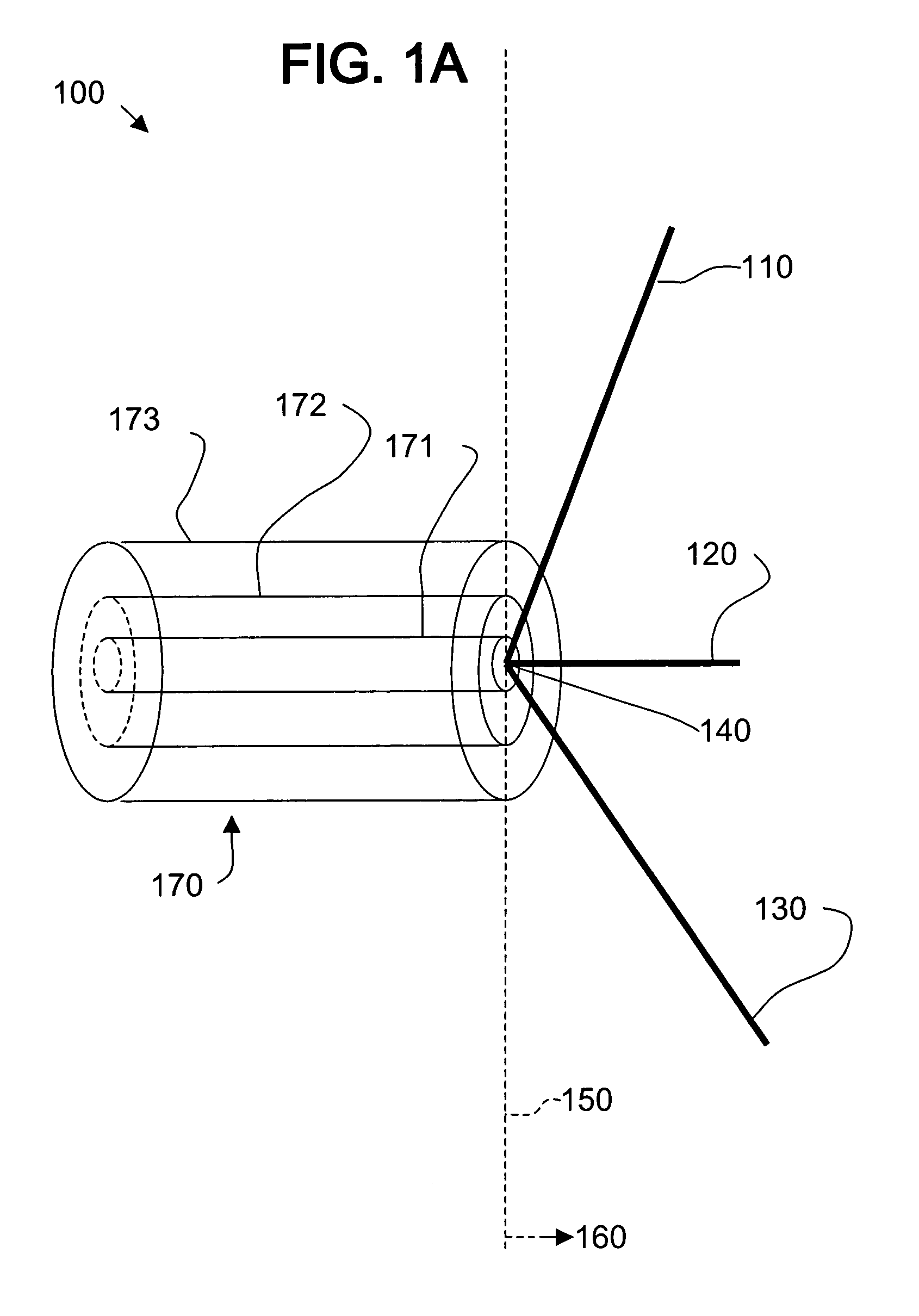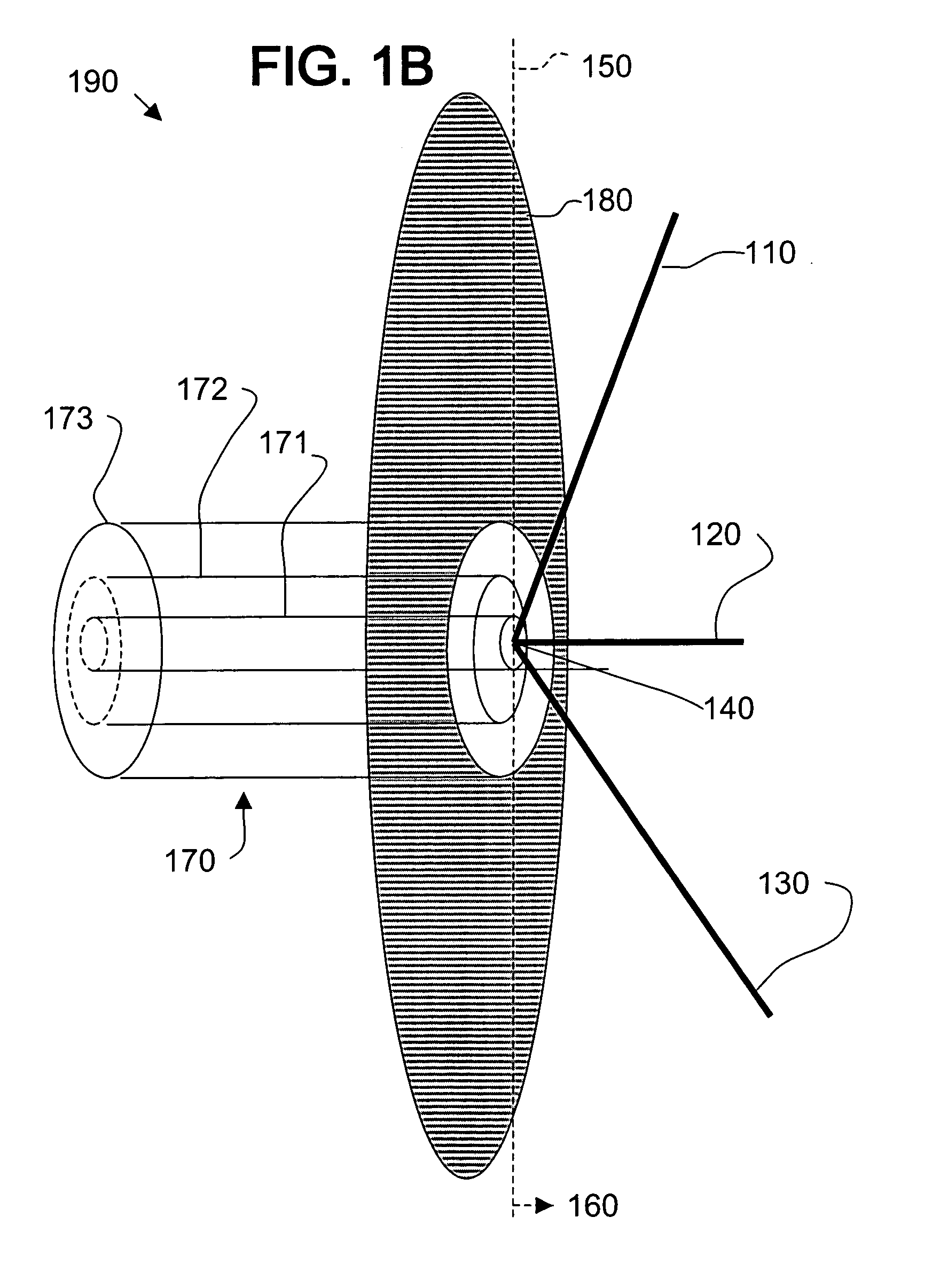Multi-polarized feeds for dish antennas
a technology of dish reflector antenna and feed element, which is applied in the direction of antenna details, polarised antenna unit combinations, antennas, etc., can solve the problems of low efficiency, low efficiency, and inability to achieve desired goals,
- Summary
- Abstract
- Description
- Claims
- Application Information
AI Technical Summary
Benefits of technology
Problems solved by technology
Method used
Image
Examples
first embodiment
[0030]FIG. 1A illustrates a multi-polarized forward feed element 100, in accordance with various aspects of the present invention. The multi-polarized feed element 100 comprises a first radiative member 110, a second radiative member 120, and a third radiative member 130. The three radiative members 110, 120, and 130 of the feed element 100 are electrically connected together at an apex point 140 such that the three radiative members 110, 120, and 130 are each disposed outwardly away from the apex point 140 at an acute angle of between 1 degree and 89 degrees relative to an imaginary plane 150 intersecting the apex point 140. The radiative members 110, 120, and 130 are all located to a first side 160 of the imaginary plane 150.
[0031]When multiple radiative members (e.g., three) are positioned over a ground plane and properly spaced, many more polarizations may be generated and / or received in many more different directions than for a single radiative member. Therefore, such a feed el...
second embodiment
[0035]FIG. 1B illustrates a multi-polarized forward feed element 190, in accordance with various aspects of the present invention. The feed element 190 includes all of the elements of FIG. 1A and further includes a ground plane 180. In accordance with an embodiment of the present invention, the ground plane comprises a flat circular conductor having a radius of at least ¼ wavelength of a tuned radio frequency.
[0036]For example, the center conductor 171 may electrically connect to the apex 140 of the radiative members 110, 120, and 130 and the outer conductor 173 may electrically connect to the ground plane 180. The insulating dielectric region 172 electrically isolates the center conductor 140 (and therefore the radiative members 110, 120, and 130) from the outer conductor 173 (and therefore from the ground plane 180). The insulating dielectric region 172 may also serve to mechanically connect the radiative members 110, 120, and 130 to the ground plane 180, in accordance with an emb...
third embodiment
[0078]FIG. 6C illustrates a modified configuration 700 of a multi-polarized forward feed and dish configuration 600 shown in FIG. 6B, in accordance with various aspects of the present invention. The modified configuration 700 further angles the ground plane beam antennas 610 and 630 and corresponding dish reflectors 620 and 640 in a second plane (x-z plane). Such a configuration 700 may provide additional spatial diversity.
PUM
 Login to View More
Login to View More Abstract
Description
Claims
Application Information
 Login to View More
Login to View More - R&D
- Intellectual Property
- Life Sciences
- Materials
- Tech Scout
- Unparalleled Data Quality
- Higher Quality Content
- 60% Fewer Hallucinations
Browse by: Latest US Patents, China's latest patents, Technical Efficacy Thesaurus, Application Domain, Technology Topic, Popular Technical Reports.
© 2025 PatSnap. All rights reserved.Legal|Privacy policy|Modern Slavery Act Transparency Statement|Sitemap|About US| Contact US: help@patsnap.com



